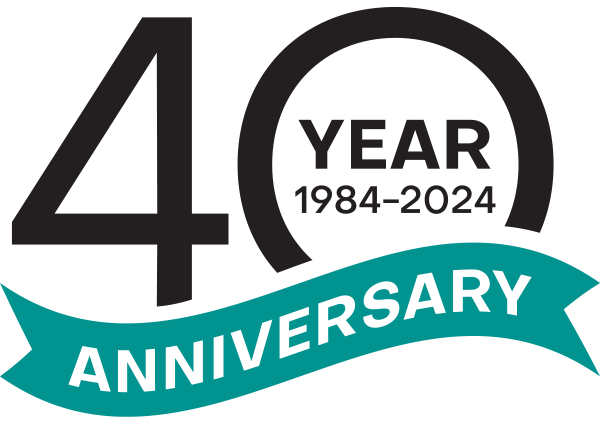Management Orientation Training

We provide a brief explanation of HelpPeople services, with an emphasis on how we serve members of the management team. This encompasses management consults, making a formal management referral, explaining HelpPeople services to employees, and information on confidentiality limits.
This course will teach you about how EAPs work and the steps in making a supervisor referral, and how to avoid common pitfalls when managing troubled employees.
Contact your employee assistance professional at 315-470-7447 or 1800-777-6110 if you have any questions about the EAP after completing the course.
Also, be sure to read your organization’s EAP policy so you understand your responsibility and role in the program’s success. Remember, top management has endorsed your EAP and expects you to support it. If you need a HelpPeople supervisor manual, please call 315-470-7447/800-777-6110 or email helppeople@crouse.org.
Enjoy the course and reap the benefits EAPs promise organizations and their employees.
HelpPeople is a work-site-based program to assist: (1) the work organization in addressing productivity issues, and; (2) employee clients in identifying and resolving personal concerns that may affect job performance. (International Employee Assistance Professionals Association, 1998)
- EAPs are confidential. The identities of EAP participants are protected by confidentiality laws. Confidentiality is also assured by the organization’s EAP policy.
- EAPs are without cost to employees and family members. Employees are responsible for the cost of services to which they might be referred by the EAP. EAPs help employees find affordable services to match their circumstances and ability to pay.
- EAPs do not interfere with administrative or supervisory practices. The EAP will not interfere with your job as a supervisor. The EAP may offer consulting and coaching help on managing a troubled employee, but it will not tell you what type of discipline to use nor direct your managerial decisions.
- EAPs are not a “safe harbor”.Participation in an EAP does not excuse unsatisfactory job performance. Your hands are not “tied” and you are not prohibited from taking action in response to an employee’s continuing job performance problems.
- EAPs are voluntary.Employees are not “forced” to participate in an EAP. Getting angry or telling an employee it is “mandatory” to go to the EAP may harm the program’s ability to attract employees and the organization’s investment in it. Utilization may suffer. Employees who come to an EAP and say, “My supervisor told me I had to come,” are typically less accepting of help.
- EAPs are non-disciplinary. EAPs cannot dispense, recommend, or recommend against disciplinary action. An employee cannot have job security, promotional opportunities, or position status jeopardized solely for participating in an EAP.
- There are two types of referrals to an EAP. Self-referral: An employee volunteers to participate in the EAP without being referred by the supervisor. Supervisor Referral: The employee agrees to participate in the EAP after being referred by the supervisor based on job performance problems (attendance, quality of work, behavior/conduct, availability issues, etc.).
*TIP: An EAP may be charged with evaluating an employee who tests positive for drugs or alcohol at work. An EAP may then refer him or her to treatment. The organization may choose to terminate an employee for violating the organization’s drug-free workplace policy if he or she does not accept an EAP referral and follow its recommendations. Is this a voluntary use of the EAP? The answer is “yes” because the employee is being offered an opportunity to be accommodated for a medical problem in lieu of termination for violating the policy
With an EAP, a supervisor can focus on performance, and not feel compelled to get “involved” in the personal problems of employees. Supervisors should take advantage of this and expect employees to take personal responsibility for using resources and accepting help offered by the EAP.
EAPs help retain employees and reduce turnover.It is possible that with the help of the EAP an employee who has been your most troublesome could become one of your most valued with the resolution of a personal problem.
- EAPs reduce risk of lawsuits.Terminating employees, although sometimes necessary, can be legally risky. EAPs make it less likely that employees with performance problems will have to be terminated, thereby reducing the likelihood of legal challenges.
- EAPs help supervisors remain focused on performance. You are an expert on performance, not personal problems. An EAP makes it easier for you to do your job. EAPs also give you an alternative to tolerating poor performance, pleading with your employee to change, or figuring out how to terminate or transfer an employee.
- EAPs help supervisors troubleshoot difficult employee management situations. Employee assistance professionals have more experience than any other profession in consulting with supervisors on managing difficult employees. This experience builds into an extensive base of practical knowledge available within the EAP field.
A supervisor referral is appropriate when your employee’s performance problems continue despite your attempts to correct them in the normal process of supervision. Your employee may or may not have a personal problem, but the criteria for a supervisor referral exists – a continuing performance problem.
A troubled employee is an employee whose personal problems interfere with job performance – attendance, quality of work, behavior, attitude, or availability.
Refer employees early before problems become severe and your relationship with the employee deteriorates. Don’t ignore a developing performance problem. Don’t fear that your employee will be insulted by a supervisor referral to the EAP.
- A supervisor referral is based upon job performance issues. It is not based upon the supervisor’s belief in the existence of a personal problem. A personal problem may exist, and symptoms of it may appear obvious, but the rationale for supervisor referral to the EAP is always based upon legitimate concerns of the employer –performance problems.
- Some employee problems and experiences at work may meet the criteria for immediate referral to the EAP (inappropriate behavior, violation of the drug and alcohol policy, violence, sexual harassment). Others may warrant a strong suggestion of self-referral — (being affected by a critical incident, death of a coworker, etc.).
- It is reasonable for a supervisor to encourage an employee to use the EAP as a self-referral if the employee discloses personal problems. This helps you avoid becoming involved in the employee’s personal problems. (This is not a supervisor referral.)
*TIP: If you enable an employee with a performance problem, a personal problem may grow worse, and it may become more difficult to treat. Refer employees early before performance problems, personal problems, and your relationship with your employee grow worse.
A supervisor referral is not a casual conversation. It is a formal step in attempting to correct performance.
It includes: 1) telling your employee you are making a supervisor referral to the EAP and why; 2) communicating the nature of the performance issues to the EAP in writing or through telephone consultation at 315-470-7447 or 1800-777-6110; and 3) asking the employee to sign a release so you will have information about participation and follow-through with the EAP and its recommendations, not personal information.
Observing performance is important prior to constructing documentation. Observing performance means being alert to decline or undesirable changes in your employee’s performance.
- The essential duties, functions, and behavioral expectations of one’s position are the legitimate concern of the employer, and are typically evaluated. These include:quality of work, attendance and tardiness, conduct and appearance, attitude and demeanor, and availability to perform one’s duties.
- Don’t participate in armchair diagnosis of employees. Do not “analyze” their performance troubles to determine personal causes. Likewise, do not “rule out” a personal problem, and unwittingly decide that the EAP could not help the employee. This is a common mistake for supervisors, and it is another example of armchair diagnosis.
- It is okay to ask an employee what is causing a performance problem. This is not acting like an armchair diagnostician. However, it is important not to discuss the personal problem if one is disclosed.
- If you know your employee well, it is tempting to analyze behavior and involve yourself in his or her personal problems. This is a form of enabling, and it reduces the likelihood that your employee will use the EAP.
*TIP: High tolerance to alcohol is normal for alcoholics. They may appear sober, when in fact they are intoxicated. This leads some people to believe that a person with alcohol on their breath can drive a car or perform other functions. Follow your organization’s policies, but never let an employee drive if you suspect that he or she has been drinking or using drugs. Likewise, never send an employee home alone who does not appear to be in control of his or her behavior, or has made suicidal or homicidal threats. When in doubt, ask the EAP or another designated person within your organization who handles emergencies for guidance. Know how your organization wants you to respond so you are prepared in the event of such a crisis.
There are important principles to follow when constructing documentation. These principles are easily forgotten or ignored by supervisors, thereby making it difficult for an organization to act on the documentation because it is problematic.
Without effective documentation, it is also difficult to motivate troubled employees to improve their performance, and difficult to safely administer disciplinary actions without legal risk.
- Document discussions, encounters, actions, or steps taken with employees. Also document verbal warnings and conferences. Avoid emotional or subjective language when constructing documentation. THINK: Am I using language in my documentation that is measurable and “describes,” not “interprets”unacceptable behavior?
- EXAMPLE: “The employee was irresponsible in reporting the day’s financial receipts.”
- BETTER: “The employee did not enter the amount of daily receipts in the ledger. This caused a delay in reporting the monthly financial performance of the work unit.”
- Make documentation open and available for your employee to see. Don’t keep a hidden file or secret notes. Letting the employee know what is being documented can motivate change rapidly.
- Record positive information about your employee when documenting job performance problems. More than likely, there are positive aspects of performance that exist. Know what they are and refer to them. This will help you appear as an objective supervisor if your documentation is ever questioned during appeals, grievances, or legal proceedings.
*TIP: Documentation can be tricky. You may think or feel that an employee’s performance is irresponsible, dishonest, selfish, boorish, etc., but be sure to document the performance issue clearly. Stay away from emotions and judgments in your documentation in lieu of the facts. Documentation by supervisors is frequently deemed useless if it does not describe performance or behavior issues clearly, but only judges the employee’s character. In the above example, the thing that can be observed is failing to enter the financial receipts. Remember, effective documentation of behavior, work outcomes, or the impact of behavior on the organization is what makes a response by the organization possible. An employee may transfer to another part of the organization when having difficulty with performance. The motivation may be to avoid consequences of ongoing performance problems. Transferring to another part of the organization to avoid confrontation is sometimes called “making a geographic cure.” Consider whether circumstances make it appropriate or helpful to transfer documentation to the new supervisor.
List of Performance Issues (Click Here) – https://www.helppeople-eap.org/SupervisorTraining/index.htm
Ideally, meeting with your employee and discussing performance problems leads to self-correction. However, when a chronic personal problem contributes to performance problems, it is more likely that self-correction will last only a few days or weeks spurred by a renewed sense of self-control that follows a confrontation with the supervisor.
Sometimes troubled employees confronted with performance shortcomings get help for personal problems immediately and you may not know it. Others try harder to use willpower, or remain in denial that a personal problem is causing their performance problems. These employees may eventually need a supervisor referral to the EAP before they can be helped. Some will not seek help until motivated by the possibility or certainty of disciplinary action.
An employee does not have to “want help” before a referral to the EAP can work. The requirement of “wanting” help first, before one can be helped, is a myth about the helping process.
Steps in confrontation. (Note: If your employee is a member of a labor organization/bargaining unit, consider whether circumstances require by agreement that you have a business representative, shop steward, or union official present when meeting with your employee.)
- Be direct and formal in your discussion with your employee. Ask why performance problems are continuing, and what the employee believes is wrong. If personal, recommend the EAP. If work-related, consider an appropriate intervention or response.
- Confronting your employee immediately after a performance-related incident is helpful in reducing denial and facilitating a constructive meeting that will motivate your employee.
- State your observations and use your documentation (which should not be a surprise to the employee) in your corrective interview.
- Make an agreement with your employee that specifies “what” and “when” improvements in performance will be forthcoming. Schedule a date for a follow-up meeting.
If possible, consult with the EAP prior to making a supervisor referral, and provide the EAP with written information about the performance issues. This helps the EAP conduct a more effective assessment. Without written information, the EA professional must rely upon the employee’s report of job performance problems, or recall what you have said about the performance issues at the time of a telephone consult. When this happens, EAP interviews with an employee may be less effective because the employee rejects what he or she is hearing.
- Tell your employee that you are making a supervisor referral to the EAP, and that you are basing the referral on performance problems. Be specific, tell your employee that you have made the EAP aware of the performance issues.
- Reference your documentation and past discussions with your employee. These should not be a surprise. Appear supportive, not angry. Act hopeful, not cynical.
- Remind the employee that the EAP is confidential. Ask your employee to sign a release so the EAP can confirm participation and follow-through with its recommendations. Tell the employee that the EAP will not provide personal information. Ask the employee if he or she will accept the referral.
- Let the employee know that participation in an EAP cannot result in loss of promotional opportunities or jeopardize one’s job security.
- If your employee does not accept an EAP referral, remind the employee that he or she could be subject to disciplinary action if performance problems continue. Do not threaten disciplinary action you will not or cannot carry out.
*TIP: Do not discuss the referral of your employee with others, especially coworkers. Although your supervisor or manager may be aware of the referral, you must be cautious about improper disclosure of your employee’s personal information. Do not place information in a personnel file about the employee’s participation in the EAP that can remain there for others to see. These actions can contribute to the perception that the EAP is not a safe source of help.
After referring your employee, expect the EAP to confirm your employee’s attendance and agreement to follow through with its recommendations. Do not expect to receive personal information about your employee. If the EAP does not call you, then you should call the EAP. If the EAP cannot communicate with you about your employee, the employee may not have gone to the EAP, or may not have signed a release. Continue to focus on job performance and act accordingly. Do not become frustrated with the EAP, or believe your “hands are tied” and that you can’t act.
Monitoring your employee after making a referral to the EAP reinforces progress in improving performance. It also helps your employee remain motivated and participate in treatment or counseling recommended by the EAP.
Consider the following steps in monitoring your employee’s progress after making a referral to the EAP:
- Decide upon a date and time to meet and discuss progress in improving performance. Deciding upon several dates and times in the future will provide a constructive sense of urgency for your employee to follow through with a treatment plan, the EAP’s recommendations, or other actions recommended to resolve or manage a personal problem.
- Expect the EAP to call you if your employee misses follow-up appointments or stops following through with its recommendations. Missing appointments and failing to follow treatment recommendations usually precedes a return to job performance problems.
- If performance problems return, notify the EAP.
- Praise your employee for improving performance, but be mindful of any return of performance problems.
*TIP: If your employee was treated for alcoholism or an addictive disease, you may be aware of it. Remember that a relapse (a return to drinking or using drugs) is possible. Relapse does not mean failure, but intervention must be quick and certain. Few persons with long-term sobriety achieved it without a relapse along the way. A referral back to the EAP is necessary in the event of relapse or a return to performance problems.
Refer to your organization’s policies or agreement with your employee, if one was produced at the time of referral to the EAP or treatment. If in doubt about what to do, note the general trend in improvement of your employee’s performance.

Making Employee Referrals
Lorem ipsum dolor sit amet, consectetur adipiscing elit. Maecenas consectetur.

Professional Consultations
Lorem ipsum dolor sit amet, consectetur adipiscing elit. Maecenas consectetur.

Management Resources
Lorem ipsum dolor sit amet, consectetur adipiscing elit. Maecenas consectetur.

Internal Program Promotion
Lorem ipsum dolor sit amet, consectetur adipiscing elit. Maecenas consectetur.


